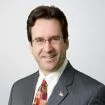Philip Baker-Shenk is a Partner in our Washington-DC office
HIGHLIGHTS:
- The civilian use of unmanned aerial technology — UAVs, UASs or drones — is inevitable, and right now, the government is sorting through regulatory, aviation, telecommunications, First Amendment and privacy issues.
- Given the opportunities and challenges involved, the time is now for the news media, private industry and tribal, state and local governments to participate in the public discourse on federal civilian drone policy and regulation.
A Regulatory Framework
It's only a matter of time. Unmanned aerial technology – called UAVs, UASs or drones – for civilian use in the United States is inevitable. Federal agencies and Congress are now writing the policies and regulations to govern the operation of UAVs and determine which uses may be phased in first.
Strong public policy favors the use of UAVs in U.S. airspace. Significant property interests, including management of crops, wildlife, facilities and utilities, will be well-served by UAVs, as will law enforcement, emergency responders and countless technology-based innovations in everyday commerce. But defining the rules of the federal airspace will be a complex undertaking, and will set the contours of economic growth and worldwide innovation.
Private industry and tribal, state and local governments must assert themselves in the public discourse on federal UAV policy and regulation. The emerging law and regulations being shaped – at this very moment – will set hard and fast boundaries for decades to come.
A Telecommunications Network
While the Federal Aviation Administration (FAA) has been charged with the air-safety aspects of this process, it will not be the only federal agency that helps craft a workable regulatory structure. UAVs necessarily need wireless control systems and dedicated signal frequencies. The Federal Communications Commission must be engaged in establishing reliable parameters for command and control of these important devices, as well as the ability of UAVs to transmit live data – video and audio – to their ground-based controllers.
A First Amendment–Privacy Balance
Journalists need a seat in the regulatory cockpit – right now. Statutes and case law already define boundaries between the First Amendment right to gather news and public safety and privacy. Establishing reasonable constraints on aerial news gathering is entirely appropriate and workable. The media should be part of that discussion. From traffic reporting to coastal hurricane watches and mountain wildfires, lower-cost aerial photography would help America's newsrooms bring more accurate and useful information to the public. Inflated concerns about paparazzi snooping overhead should not overtake the discussion. Journalists must help lift the discussion, and ground unreasonable fears, to help UAVs take off.
A Safe Flight Plan
While privacy concerns about the use of UAVs are heated, the overarching issue is their safety in the national airspace. The FAA will permit their widespread operation only when UAVs can safely navigate among commercial and general aviation aircraft and with no jeopardy to those on the ground. Fortunately, the technology that will allow UAVs to sense and avoid other aircraft is rapidly maturing. Soon we will see UAVs emerge that are capable of safely functioning even beyond the line of sight and active control of an operator.
The FAA understands these technology issues and is actively pursuing a sensible regulatory structure that preserves safety in the U.S. aviation system. Again, with the right input from the stakeholders and safety protocols in place, it's only a matter of time before UAVs will be in the U.S. airspace.
Holland & Knight lawyers have the knowledge and experience to answer your questions about the development of and policies relating to the use of civilian drones in the United States.
The content of this article is intended to provide a general guide to the subject matter. Specialist advice should be sought about your specific circumstances.


